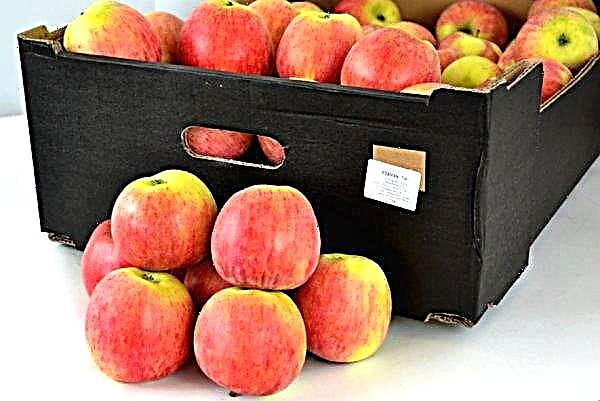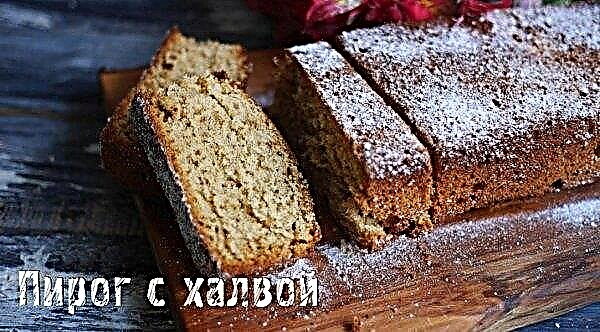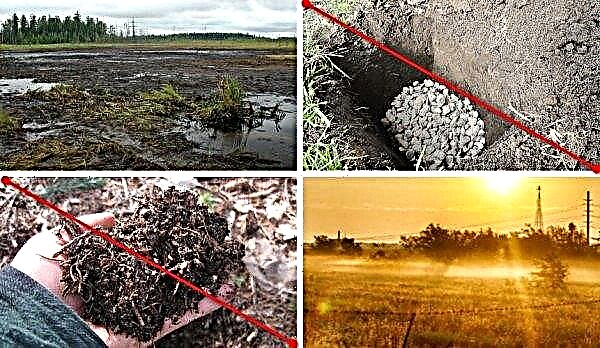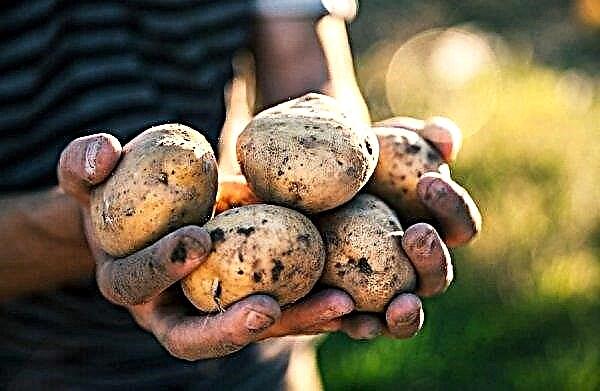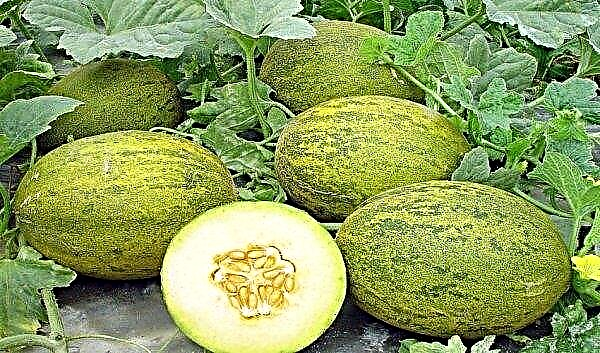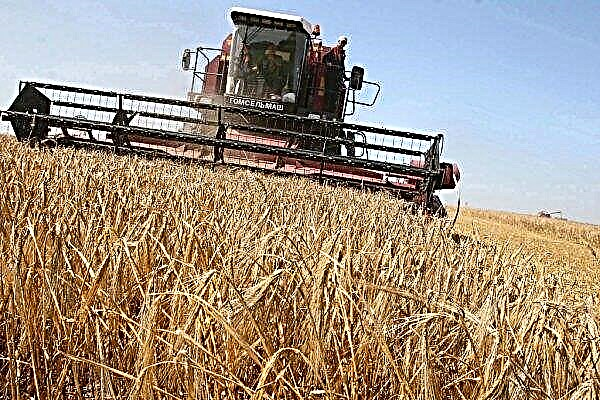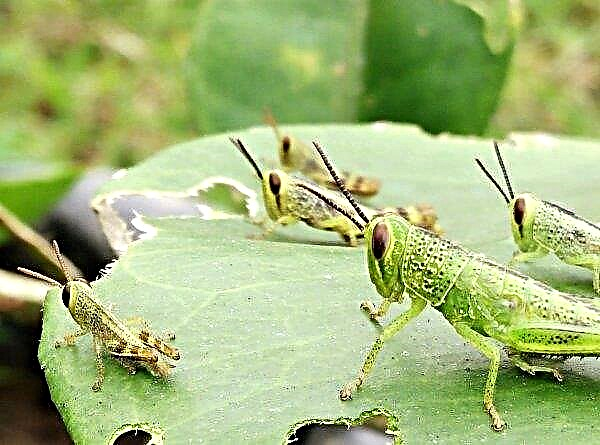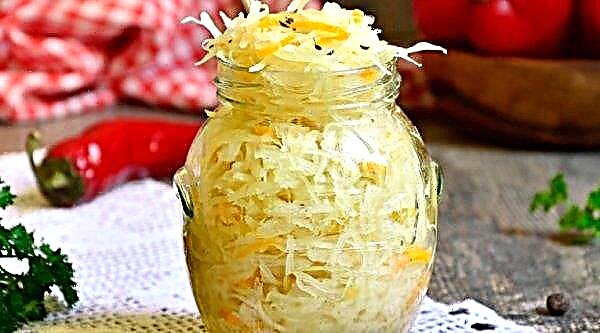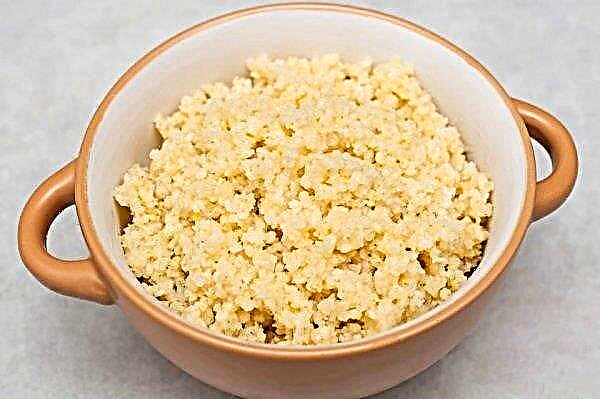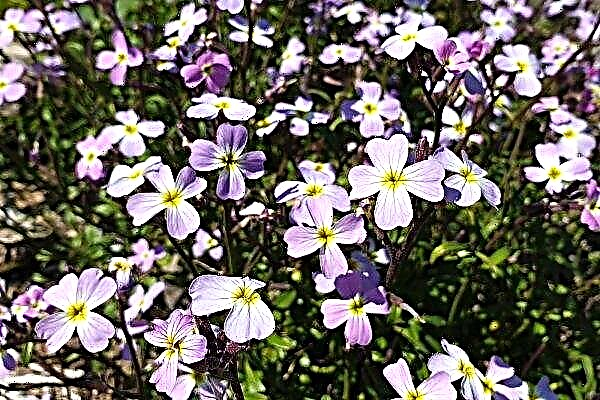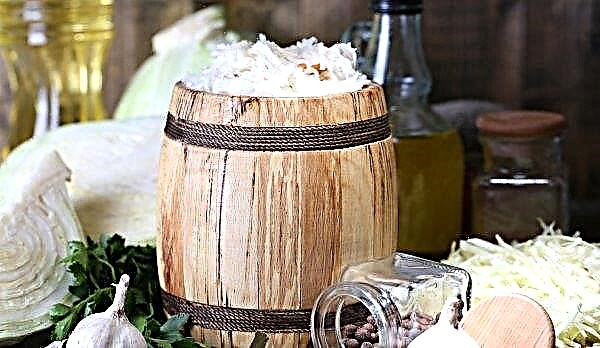In non-smokers, who make up the prudent majority of the population, the word "tobacco" causes bad associations associated with the purely harmful nature of this potion. Meanwhile, this plant, with reasonable use, not associated with its burning and retraction of combustion products into the body, can have a therapeutic effect for various problems with human health. Read more about the most famous tobacco grade of tobacco - Turkish, read further in the article.
History of Turkish Tobacco
It is well known that tobacco came to Europe from America, where the Indians smoked the pipes of the world and simply smoked long before that. The winding paths along which this potion spread throughout the Old World are less well known. Having originally arrived in Portugal and Spain, tobacco began its procession across the continent at the beginning of the XVI century as a medicine, which was mainly sniffed and chewed.
Did you know? Tobacco is saturated with more than 3 thousand chemical compounds.
But then tobacco smoking triumphed, which, triumphantly striding across Europe, reached the Ottoman Empire in 1585, where Turkish tobacco began its history. And although researchers believe that this name is incorrect, since the first seed stocks of Turkish tobacco were bred in Greece, it was firmly entrenched, especially since in those days Greece was included in the Ottoman Empire.
Grade Features
All types of tobacco, being purely cultivated plants, do not significantly differ from each other, getting their names mainly by territorial characteristics of origin or by the method of drying the leaves and cutting them.
Nevertheless, Turkish tobacco has its own specific features, the description of which is:
- spicy taste;
- sweet aroma;
- yellow-greenish or brownish-golden color of dried leaves;
- small sizes of leaves having different shapes;
- the need to dry leaves only under the sun.
Tobacco planting at home
Tobacco seeds retain good germination for several years. Because tobacco is a thermophilic crop. Its seeds are sown directly into the soil only in the southern regions. In all others, a seedling method of cultivation is used.
For this, usually in mid-March:
- The seeds are wrapped in a damp cloth or napkin, before being wetted, a few crystals of potassium nitrate or a couple of drops of tartaric acid are added to the water, which stimulates seed germination.
- The swollen seed material is washed, dried and placed on a damp cloth at the bottom of the container, which is placed in a warm place, constantly maintaining the moisture content of the tissue.
- The seedlings that appear, which usually happens after 3-4 days, are dried, carefully mixed with dry fine sand and sown on top of a moistened substrate prepared from 3 parts humus and 1 part river sand. It is best to fill separate containers from cardboard or peat cups with a substrate, since tobacco seedlings tolerate transplants very poorly, which forces them to refrain from picking.
- From above, the seeds sown are sprinkled with the same substrate, the layer thickness of which should be at least 7 mm.
- In order not to erode the substrate layer, seedlings should be watered carefully through a strainer.
- Then containers with seedlings are covered with a transparent film to create a greenhouse effect and placed in a bright, but not sunny place at a temperature of + 23 ... + 28ºC.
- Subsequent care consists in maintaining the substrate in a moistened (but not excessively!) Condition and in double ventilation.
- Following the development of the seedlings of the first two true leaves, the ambient temperature is lowered to + 20ºC, and watering is intensified.
- Fertilize the growing seedlings with a solution from a bucket of water with the addition of 20 g of sodium sulfate and 30 g of ammonium nitrate. You can also use organic fertilizers in the form of bird droppings, 1 kg of which is stirred in a bucket of water and insisted for a decade, after which the strained infusion is diluted with a 5-fold volume of water.
- 10 days before planting in open ground, the seedlings are tempered, taking it out to the open air for a couple of hours and daily increasing its time spent on the street.
- A couple of days before planting in open ground, the sprouts stop watering, and 2 hours before the direct planting, on the contrary, they are abundantly watered.
- When the seedlings reach the age of 40–45 days, it can be planted under the open sky. By this time, the sprouts reach a height of up to 15 cm, 6 real leaves grow on them, and the stem thickens to 5 mm. Necessary conditions for planting in open ground are: a guarantee of non-return of frosts and soil warming to a depth of at least 10 cm to a temperature of + 10ºC. Most often this happens from April 20 to May 25.
- Seedlings are planted in light, loose soil, fertilized with wood ash or rotted mullein, in which holes are made at a distance of half a meter from each other. Wells are moistened with half a liter of water each. The depth of the holes corresponds to the size of the root system of seedlings, which is first filled with moist soil, and then dry on top.
Video: growing tobacco at home
Features of tobacco care at home
Care for tobacco plants consists of regular watering, fertilizing with fertilizers, weeding, loosening the soil, pinching and trapping.
Watering
Usually during the growing season, tobacco plants are watered three times, for which it is used to a bucket of water under each bush. The best indicator of a plant's dysfunction is tobacco leaves. In the event that they begin to fade and turn yellow, the plant must be watered immediately.
Important! Even more drought, tobacco is afraid of overmoistening the soil. Excess moisture in the root system can lead to the death of the entire tobacco plant.
Top dressing
For the first time after planting in open ground, seedlings are fed with fertilizers after a couple of days. After 3 weeks, the second top dressing is carried out, and after another 2.5 weeks - the third. Nitrogen, phosphorus and potassium should prevail in the fertilizers used. Most preferred is an organic fertilizer in the form of chicken droppings, which is diluted with water in a ratio of 1:10. The use of complex mineral fertilizers is also recommended.
Experienced tobacco growers are also advised to use:
- chopped nettles;
- banana peel;
- onion peel;
- whey;
- dry yeast;
- crushed eggshell;
- potato peelings;
- boric acid;
- iodine.
Weeding
Tobacco plants do not tolerate weeds growing nearby, so it is advisable to keep the soil around tobacco bushes clear of other vegetation. Usually, weeding is combined with loosening of the soil, which provides a good supply of oxygen to the root system of the tobacco. In addition, it is necessary to loosen the soil after each rain or watering, in order to avoid the appearance of a crust on the earth's surface, which interferes with the root air exchange.
Did you know? Comparison of tobacco sold like hot cakes turns very pale against the background of cigarettes, which in the world buy 10 million units in 1 minute.
Another important element of care for tobacco bushes is their tracing and pinching. By trapping, excess inflorescences are removed from the bush, after which the leaves receive additional nutrition for their development. The same purpose is served by herding, eliminating lateral shoots and redirecting nutrients to the main green mass of the plant.
Diseases and Pests
Tobacco plants are characterized by fungal diseases that affect the nightshade, in the form of:
- dry root rot;
- black root rot;
- black legs;
- peronosporosis (downy mildew);
- powdery mildew;
- alternariosis (dry white spotting).
Fungal diseases affecting the roots are fought with the help of Benatah's 50 percent wetting powder. Other fungal diseases are treated by spraying tobacco leaves with a suspension of Polycarbacin or Tsineba.
In addition to fungal diseases, tobacco bushes are susceptible to infection by bacteria in the form of hazel grouse and viruses that cause the disease:
- tobacco mosaic;
- cucumber mosaic;
- apical chlorosis;
- white motley.
Viral diseases cannot be treated, so plants affected by them must be removed and burned immediately. And against the bacterial rowan, the same means are effective that are used to combat fungal diseases. But it is better not to bring the matter to illness and take timely preventive actions in the form of treating tobacco seeds and soil with a formalin solution, for which 40 percent formalin is dissolved in 1 liter of water.
But it is better not to bring the matter to illness and take timely preventive actions in the form of treating tobacco seeds and soil with a formalin solution, for which 40 percent formalin is dissolved in 1 liter of water.
Among the pests are the most dangerous for tobacco plantations:
- tobacco thrips;
- peach aphid;
- wireworm.
These pests infect the leaves, stems and roots of the plant, sucking out nutrients from it. They fight aphids and thrips with the help of Metathion and Rogor preparations, and with wireworms with Metaphos or Hexachloran.
Tobacco collection and processing
The cessation of leaf growth on the bush indicates their readiness for collection. At this point, tobacco leaves reach their maximum density, which guarantees their best quality. In addition, their lighter color indicates the maturity of the leaves in comparison with foliage that did not reach the desired condition. Typically, tobacco is harvested in the evenings, starting with the lowest, largest leaves, gradually rising higher as the rest of the foliage ripens.
The following is the process of drying the leaves. The main difference between Turkish tobacco and other tobacco varieties, as already mentioned, is the need to dry it exclusively in the sun. This drying method, coupled with the internal properties of this tobacco species, allows drying to be combined with the fermentation process.
That is, under the sun in moisture-containing tobacco leaves, biochemical processes occur that change the physical condition of the product. The leaves darken and acquire a characteristic tobacco aroma. Most other types of tobacco require artificial fermentation, which involves additional effort and expense.
The main use of Turkish tobacco
Most often, this product is used for smoking and in its pure form as pipe or hookah tobacco (mmc), and in the form of mixtures with other tobacco varieties. However, the medicinal properties of this plant, revealed at the dawn of its use in Europe, are still being used both in traditional medicine and in official medicine. Most often, tobacco is used as a painkiller. He proved himself well as an effective anthelmintic.
Important! The presence of nicotine poison in tobacco leaves makes caution in using them medicinally essential.
In addition, tobacco is used for:
- accelerate the healing of long non-healing wounds, since it can kill 36 species of microbes;
- optimization of the state of the nervous system;
- assistance in the treatment of organs of vision;
- solutions to problems associated with the skin;
- improving the cardiovascular system;
- eliminate problems with tuberculosis of the lymph nodes.
 Tobacco in general and Turkish in particular, over its long history, has undergone a powerful rise in popularity and a period of severe obstruction, which continues to this day. Nevertheless, it continues to be cultivated all over the world, because, in addition to harmful smoking, it is also capable of healing tobacco treatment.
Tobacco in general and Turkish in particular, over its long history, has undergone a powerful rise in popularity and a period of severe obstruction, which continues to this day. Nevertheless, it continues to be cultivated all over the world, because, in addition to harmful smoking, it is also capable of healing tobacco treatment.


